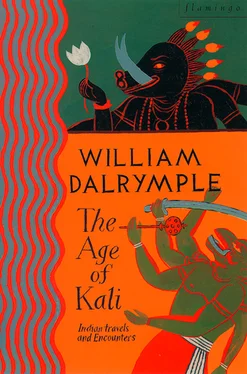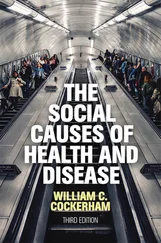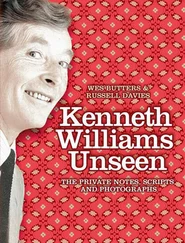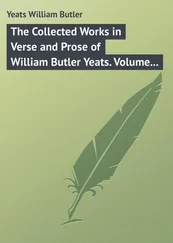‘In what sense?’
‘Laloo is from a low caste,’ said Ashok. ‘He is always encouraging these nichla [oiks] to rise up against us. When Laloo came here after the massacre we threw stones at him. Every day we pray for his downfall.’
‘But don’t your new houses give you some protection?’ I asked.
‘Our houses are strong,’ replied Ashok, ‘but we are vulnerable. We cannot stay in our houses all day. We have to move around.’
Cowherds were now leading the buffalo back to the village for milking. Around where we were standing, women were lighting dung fires and beginning to cook supper. The afternoon was drawing in. I thought of the warnings we had received to be back in Patna and off the roads by the fall of darkness.
‘The government will not protect us,’ said Ashok as we walked back to the car, ‘so we are left at the mercy of God. This is the Kali Yug [the age of Kali], the epoch of disintegration. The lower castes are rising up. Everything is falling apart.’
After living in India for five years, I finally left Delhi in 1994. I dismantled my flat and set off to write a book in the Middle East. Returning to the subcontinent two and a half years later, I found that a quiet social revolution had taken place in my absence, with lower-caste politicians seizing power in state after state across India. This process seemed to have started in Bihar, in the person of Laloo Prasad Yadav, the man the villagers of Barra had blamed for their massacre. Laloo in many ways seemed to personify much that was happening in India, and I decided to return to Bihar to try and meet him.
Although a similar revolution was taking place at the same time in Uttar Pradesh, when he first came to power in 1991 Laloo was still a relatively unlikely figure in north Indian politics. The Indian establishment was then still firmly dominated by the higher castes: Nehru, his daughter Mrs Gandhi and her son Rajiv were all Brahmins, as was Rajiv’s successor as head of the Congress Party and Prime Minister, Narasimha Rao. Brahmins had ruled India for forty-four of fifty years of independence. Kshatriyas (the second rung in the caste pyramid) ruled for two more years, in the persons of V.P. Singh (1989–90) and Chandra Shekhar (1990–91). Lower- or intermediate-caste Prime Ministers had been in power for fewer than four years of the half-century since the British left India.
Laloo was the son of a low-caste village cowherd. In the Bihar of the 1960s and seventies it was against all the odds that a man like him would manage to get educated and attain even a foothold in politics. Despite the fact that the lower castes, the Untouchables and tribesmen together formed a full 73 per cent of the population of Bihar, in the 1962 Bihar Legislative Assembly over 60 per cent of MLAs were from the top two castes, while less than 7 per cent were from low-caste backgrounds. But from the early 1980s onwards the lower castes had been on the rise, while the upper castes were in rapid retreat. In the 1984 general election, Bihar returned twenty-five upper-caste MPs to the national parliament, including seven Brahmins. By 1989 this number had sunk to eighteen, with the Brahmins still retaining their quota of seven. In 1991, the year Laloo came to power, replacing a Kshatriya Chief Minister, the number of upper-caste MPs had shrunk to ten, with only one Brahmin among them. From 1989 to 1991, the Congress Party was unable to field even one Brahmin who could win a parliamentary seat in Bihar. In the Bihar Legislative Assembly there has been an equally dramatic shift. Today only 10.2 per cent of Bihar MLAs are from the top two castes, while 52.5 per cent are from low-caste backgrounds.
Laloo’s political views were formed by his childhood experience of being kicked around by the higher castes of his village. From the beginning of his career he spoke out bitterly against the Brahmins and the Hindu revival that in many areas was bringing about a new hardening in the caste system. ‘Our fight is against the wearers of the Sacred Thread [i.e. the Brahmins],’ he told his audiences. ‘For centuries the priests have made fortunes by fooling villagers. Now I tell them they should learn to milk cattle and graze them, otherwise they will starve.’ On other occasions he publicly voiced his disbelief in the Hindu gods: ‘Ram should punish these murderous fundamentalists – if he exists, that is. But he is nowhere. If he was there, so many poor people would not have died, there would not have been such poverty, such fights…’
In a country as obsessed with religion as India, such brazen anti-Brahminical atheism was a completely new message, at least in the north. But, to many people’s surprise, it worked. In the 1991 general election, Laloo – supported by the combined votes of the poor, the casteless and the oppressed Muslim community – was swept in to power with an unprecedented majority. Since then, in the 1996 election Laloo’s vote fell back slightly, but he managed to retain his hold on power, despite increasingly clear evidence that his government – and indeed his own family – were deeply corrupt, and were presiding over the looting of the state treasury. One act had brought him in to particular disrepute: the alleged embezzlement of vast sums of agricultural subsidies, referred to in the Indian papers as ‘the multi- crore fodder scam’.
Yet, notwithstanding the fall in his share of the vote, Laloo had gained greatly increased national power, as he now formed part of the ruling coalition government. For what had happened in Bihar in 1991 happened elsewhere in northern India in the 1996 election, with the rural lower castes seizing control of state governments across the country, and candidates from the upper-caste élite losing their seats en masse . H.V. Deve Gowda, a middle-caste farmer from Karnataka, was sworn in as Prime Minister to replace the Brahmin Narasimha Rao, propped up by a variety of regional parties, many of whom represented the lower castes. Where Bihar had led, the rest of the country had followed.
There are two theories about the effects of this social revolution. Pessimists point out that while the Anglicised Brahmin élite produced leaders of the calibre of Jawaharlal Nehru and Indira Gandhi, the rise of the rural lower castes has resulted in the emergence of a cadre of semi-literate village thugs, men like Laloo and his counterpart in Uttar Pradesh, Mulayam Singh Yadav, a small-time wrestler and alleged mafia don who has now risen to become India’s Defence Minister. Many such rustics can barely write their names, and they certainly have no hope of mastering the finer points of international diplomacy and economics.
On the other hand, the last decade of Brahmin rule brought to power a man like Rajiv Gandhi, who for all his polish was barely able to speak Hindi, and certainly had no grasp of the realities of life for the 80 per cent of Indians who lived in villages. Ten years ago every second person at Delhi drinks parties seemed to be either an old schoolfriend of the Prime Minister or a member of his cabinet. Now, quite suddenly, no one in Delhi knows anyone in power. A major democratic revolution has taken place almost unnoticed, leaving the urban Anglicised élite on the margins of the Indian political landscape. As Mulayam Singh Yadav put it on his elevation to the national cabinet, ‘For the first time, power has come to the underprivileged and the oppressed, and we will use it to ensure that their lot is bettered.’
This is also the stated intention of Laloo. So far his political success may have done little in concrete terms to boost the welfare of the lower-caste poor, but what it certainly has done is to boost their confidence. The lower castes are no longer content to remain at the bottom of the pile and be shoved around by the Brahmins. Laloo has given them a stake in power and made them politically conscious: exactly as the Civil Rights Movement did for American blacks in the 1960s.
Читать дальше












